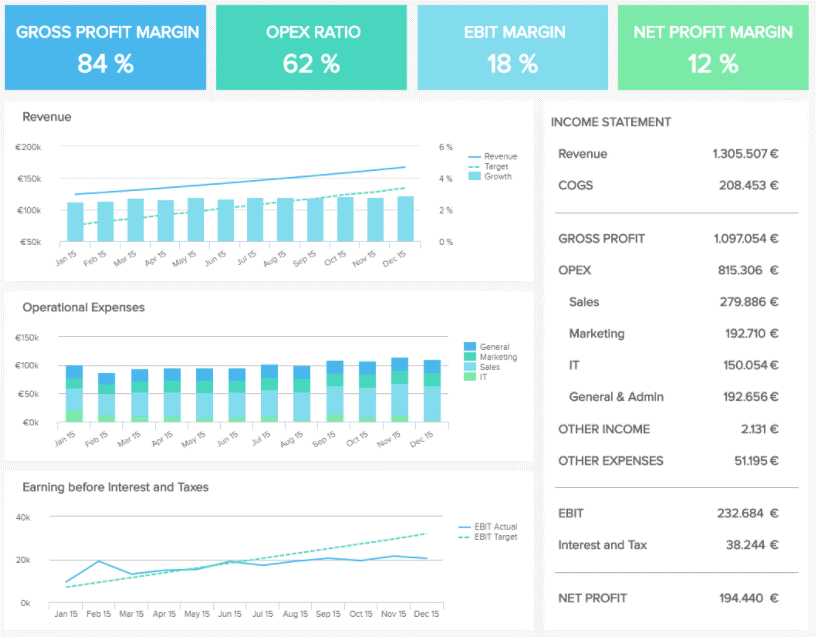Creating managerial reports is a key activity in the business management process. Managerial reports provide relevant information about business results, performance and trends and are the basis for making business decisions.
Management reporting is a form of business intelligence that supports data-driven decision-making.
It is one of the key tools in the process of managing and making business decisions.
The reports contain data on the performance and analysis of various activities and aspects of the company's operations, monitor key performance indicators (KPI) and present them in an understandable manner.
Managerial reports show the value of the business over a certain period of time.
With the help of management reports, no information can remain hidden, eliminating the possibility of a negative impact on business.
Most people are familiar with the financial reports that every company is legally required to keep, but such reports are published after the fact and are therefore not useful for decision-making. Namely, such financial reports are slow and delayed (because they use historical data), and provide insight from afar into the financial operations of your business without effective and detailed data useful for making strategic decisions.

Decision making is the process of choosing a course of action from a set of alternatives.
Problem solving and decision-making are different but related activities, and personal emotions and time pressure can affect the quality of decision-making outcomes.
With that, every decision-making process produces a written outcome that can be an action, recommendation or opinion.
1. Defining Reporting Objectives: First, determine the reporting objectives. What information is most important to managers in your organization? Think about key performance indicators, financial indicators, operational metrics and other factors that are important to your business.
2. Identification of Key Performance Indicators (KPIs): Select key performance indicators that will help you monitor the achievement of your goals. For example, KPIs may include revenue, profit, margins, market share, customer satisfaction, number of new customers, or some other relevant measure of success.
3. Data preparation: Collect and prepare the data needed to create the report. Depending on the type of report, you may need financial data, operational data, sales data, or other information. Ensure data is reliable, accurate and up-to-date.
4. Choice of report format: Choose the report format that best suits your needs and manager preferences. It can be a table, graph, dashboard or a combination of different formats. Ensure that the report is visually appealing and easy to understand.
5. Analysis and Interpretation of Results: Study the collected data and analyze it to extract key information and identify trends. Interpret report results and provide relevant comments and analysis to help managers make decisions.
6.Reporting frequency: Determine the reporting frequency, whether weekly, monthly, quarterly or annually. Regular reporting enables monitoring of performance over time and identification of changes or problems in the business.
7. Customizing reports: Be open to manager feedback






